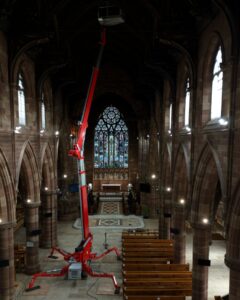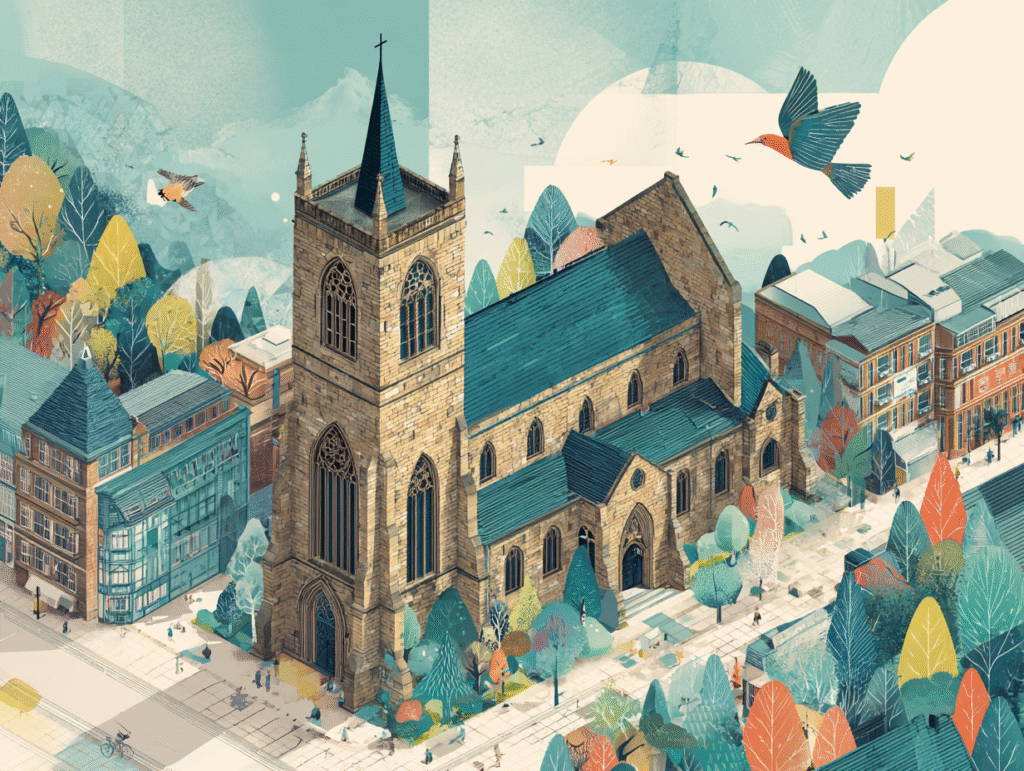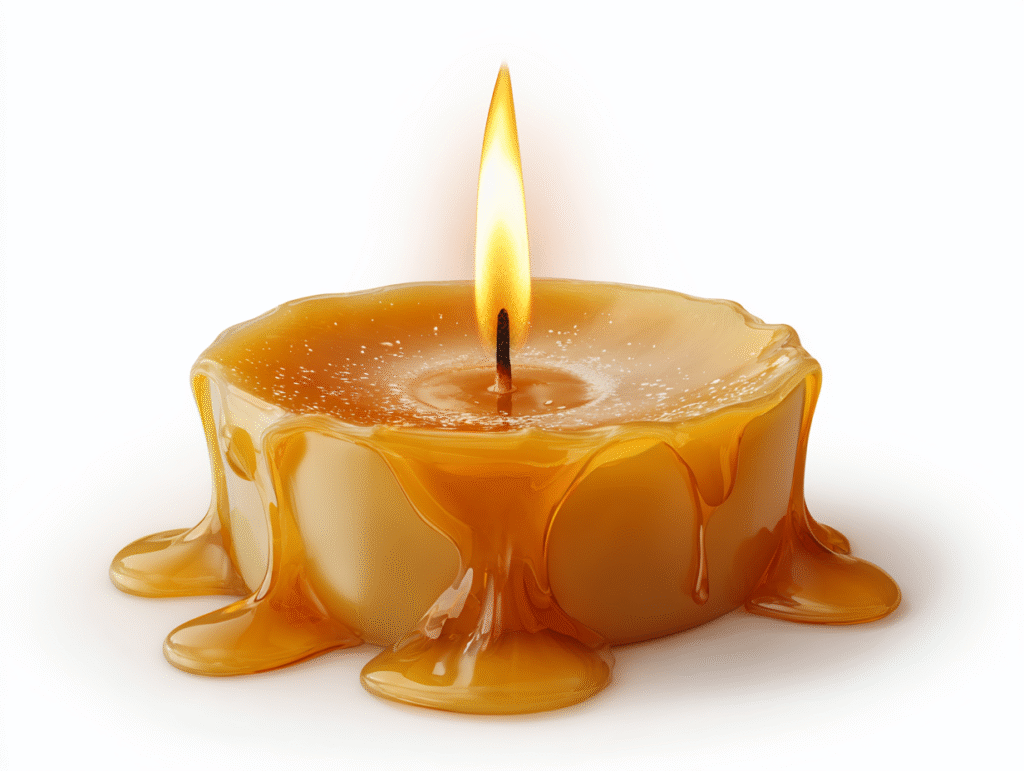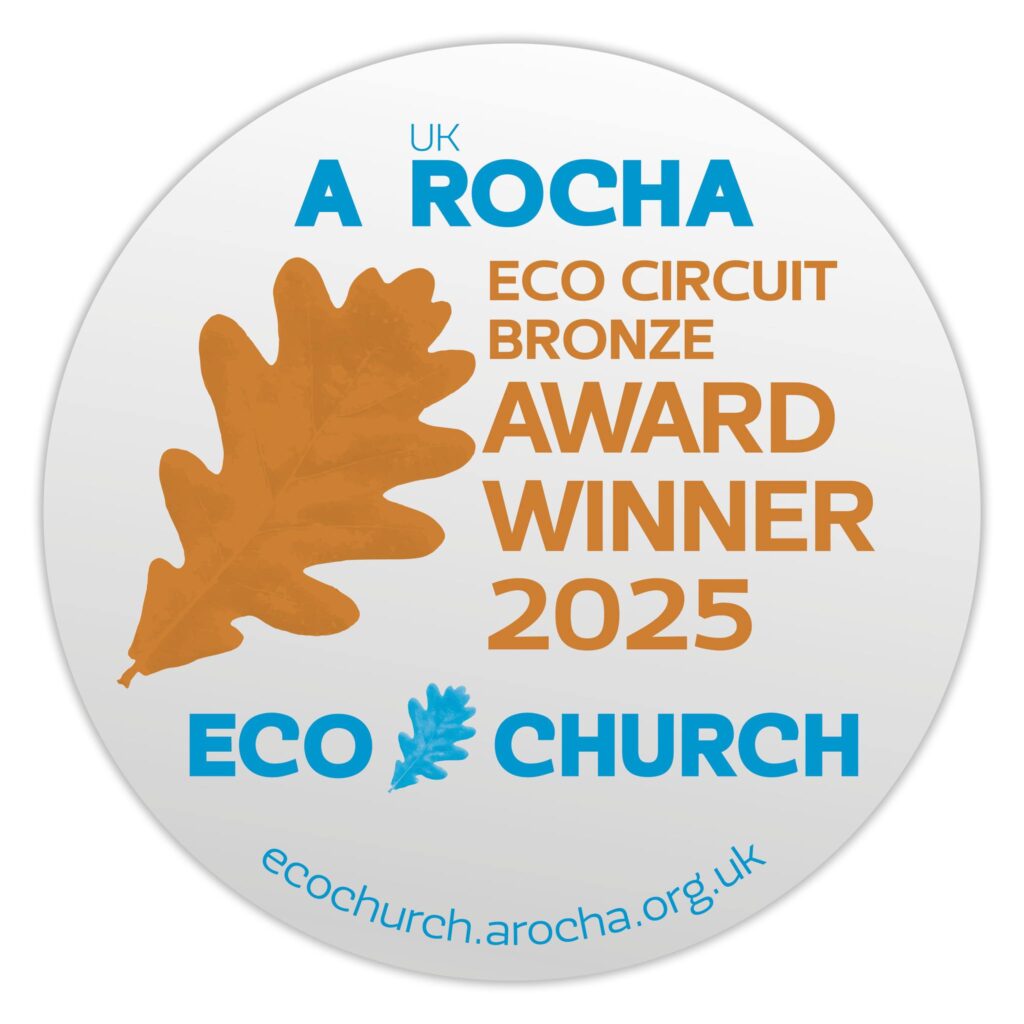Net Zero Carbon
Working together to care for God's creation at St Martin's in the Bullring
Greening the Heart of Birmingham – our Net Zero Carbon Journey
In the bustling centre of Birmingham, a historic church is leading a quiet revolution.
St. Martin in the Bull Ring, a Grade II* listed church with roots stretching back 800 years, is embracing a bold vision: to become a beacon of sustainability as part of the Church of England’s Net Zero Carbon 2030 Environment Programme.
With thousands of people passing through its doors each week – worshippers, visitors and community members – the church is a hub of worship, of community and of heritage.
Why This Project Matters
The church’s heating system, last updated two decades ago,
relies on boilers that are over 40 years old. As environmental concerns grow and energy costs rise, the need for a sustainable solution has become urgent. The Demonstrator Church Project offers both funding and a framework to explore green alternatives like air source heat pumps (ASHPs), solar panels and secondary glazing on our plain glass windows.
The Human Impact
Energy efficiency has long been a challenge in the church’s high-ceilinged spaces. In recent years, there has been work on small improvements to reduce energy consumption and carbon emissions, such as: replacement of lights with high efficiency LEDs; labelling of switches to be clear which can be switched off; refurbishment of the automatic doors at the main entrance to improve draught-proofing; sub-metering and hot water timer controls. The Demonstrator Grant funding is now allowing us to dream bigger.
A Timeline of Transformation
Over the past year or two, the church has: appointed an energy consultant and undertook an extensive energy survey; developed a NetZero strategy; consulted with the Diocesan Advisory Committee; conducted a consultation of those who use our building; appointed an experienced conservation architect, and quantity surveyors; secured Phase 1 Demonstrator funding; contracted designs for an air source heat pump, solar panels and secondary glazing; obtained Surveys of the entire footprint of the building and a structural survey of our roofs.
Looking Ahead
With a clear roadmap and a committed team, St. Martin’s is poised to inspire other churches and communities. As a Demonstrator Church, it will share its learnings widely, proving that even the oldest buildings can lead the way into a greener future.


St Martin’s at the Bullring has been actively working towards reducing our carbon footprint. Our commitment to environmental stewardship reflects our belief in caring for God’s creation.
 2025
2025
details to follow
 2024
2024
details to follow
 2023
2023
details to follow
Partnerships:
We’ve been networking with other companies or groups to recycle food waste, candle wax, serving meals made from surplus fruit and veg. Some examples are below….
Food Waste Recycling
Working with local organizations to ensure food waste is properly composted and recycled, reducing methane emissions and returning nutrients to the soil.

Candle Wax Recovery
Partnering with local recycling specialists to collect and repurpose used candle wax, giving new life to materials that would otherwise be discarded.

Surplus Food Ministry
Collaborating with local suppliers to rescue surplus fruit and vegetables, transforming them into nutritious meals for our community while preventing food waste.
Cost Savings:
Our commitment to reducing carbon emissions has resulted in cost savings, allowing us to redirect resources towards our mission and community outreach.
Current Energy Saving Highlight
300 LED Bulbs
Carbon Reduction: 2.4 tonnes CO₂ annually
Financial Savings: £720 per year
Monthly Benefit: £60 saved each month
Current Feature: Each LED bulb uses 85% less energy than traditional bulbs and lasts 25 times longer.
We regularly update this section with different energy-saving initiatives to showcase ongoing impact.
Eco Church:
We have an A Rocha UK Eco Church Bronze Award and we are working toward the Silver Award
Looking Forward:
Our three-part plan will significantly reduce our carbon footprint while preserving the historic character of our church building. We are working carefully with heritage considerations and community input.

Air Source Heat Pump
Planning to replace our boiler system with efficient heat pump technology, dramatically reducing heating emissions while providing consistent warmth for worship and community activities.

Solar Panel Installation
Exploring photovoltaic solar panels to generate clean, renewable energy on-site, reducing dependence on grid electricity and creating long-term energy independence.

Secondary Glazing
Investigating secondary glazing to improve thermal efficiency while preserving our historic windows and maintaining architectural integrity.
Our Careful Approach
We are developing these plans in consultation with:
- The Diocese of Birmingham for approvals and guidance
- Heritage conservation specialists to ensure appropriate methods
- Our congregation and wider community for input and support
- Environmental consultants to maximise efficiency and impact
Through thoughtful planning and community engagement, we aim to create a model for how historic churches can embrace environmental responsibility while honouring their past.
This section will be updated as we progress through approvals and begin implementation of these initiatives.
